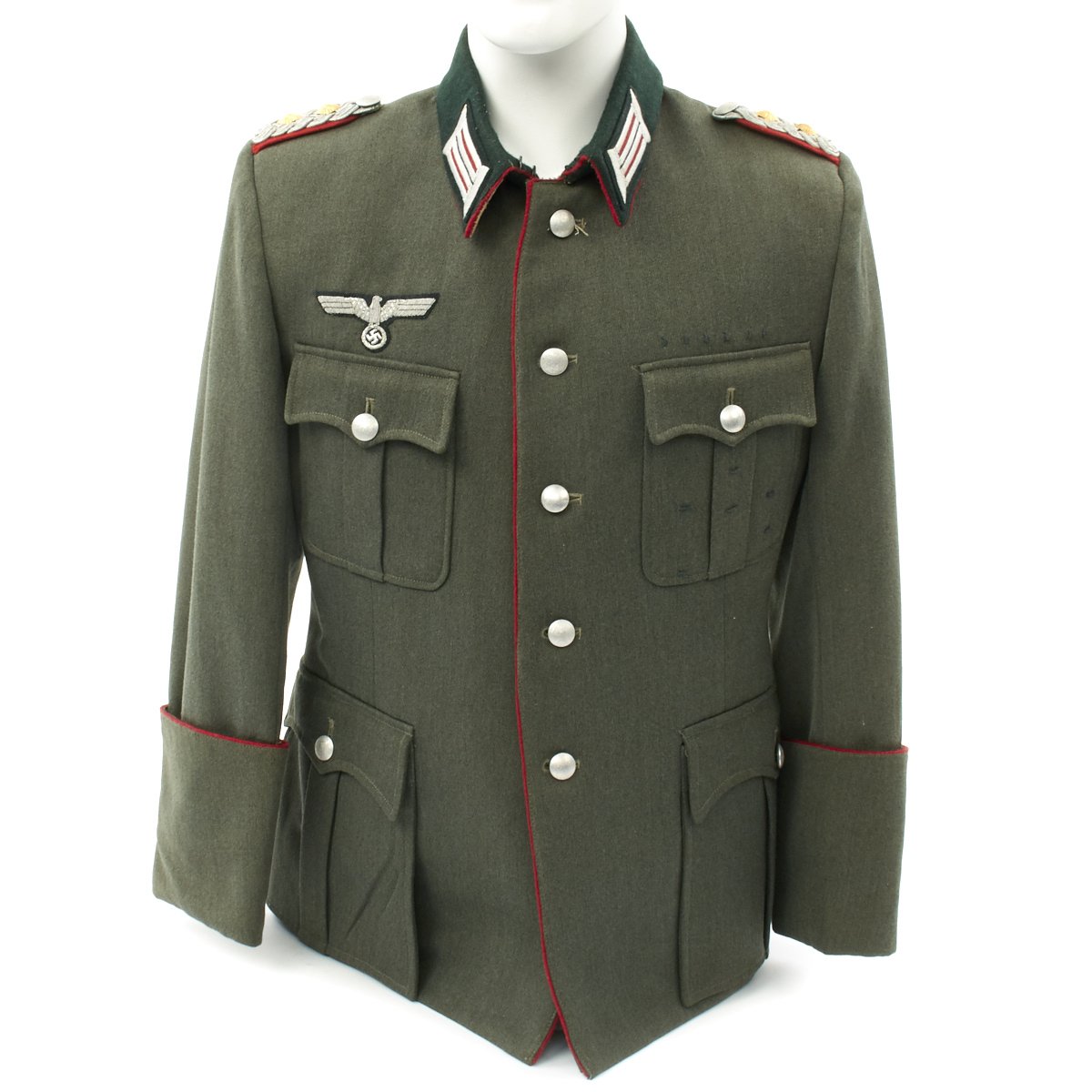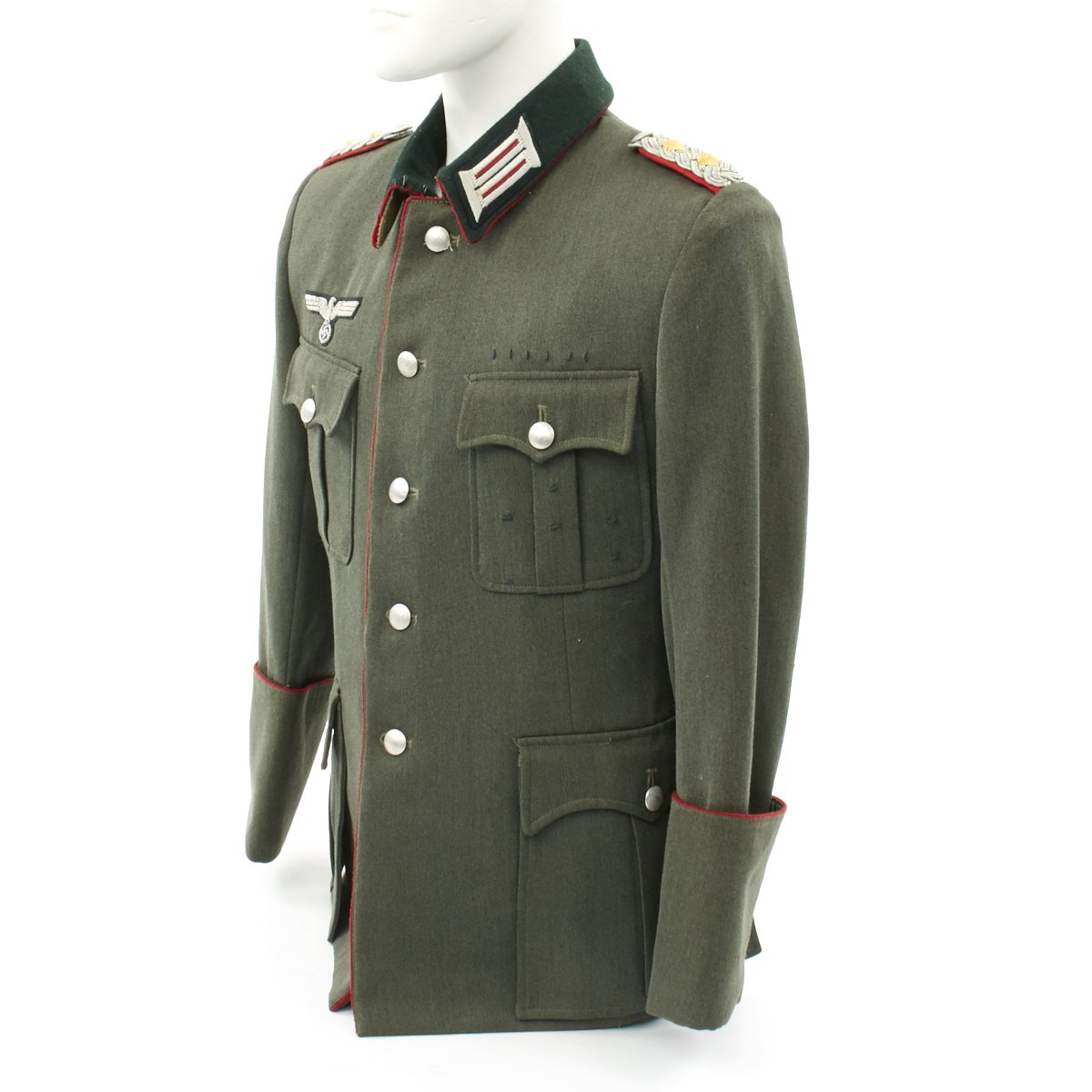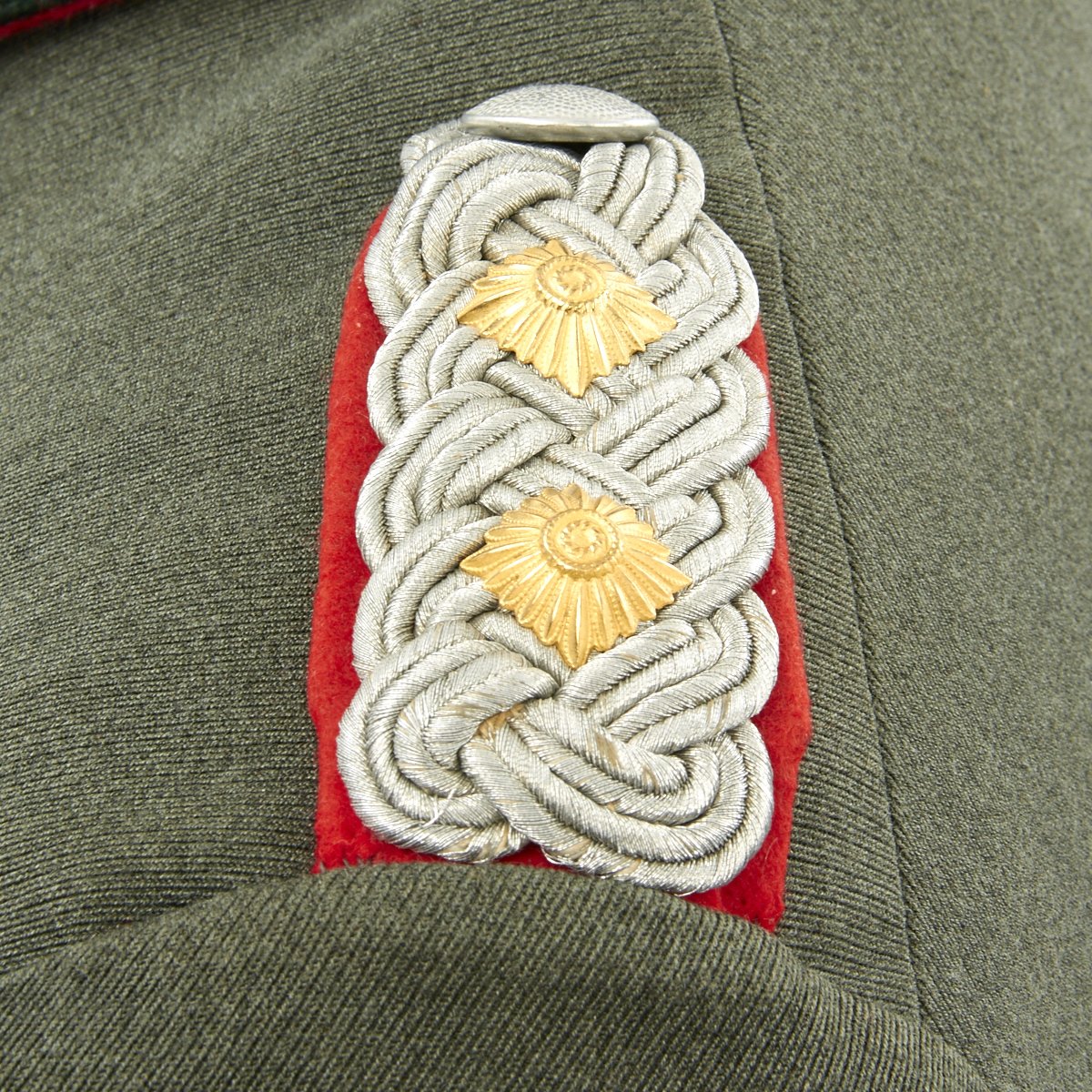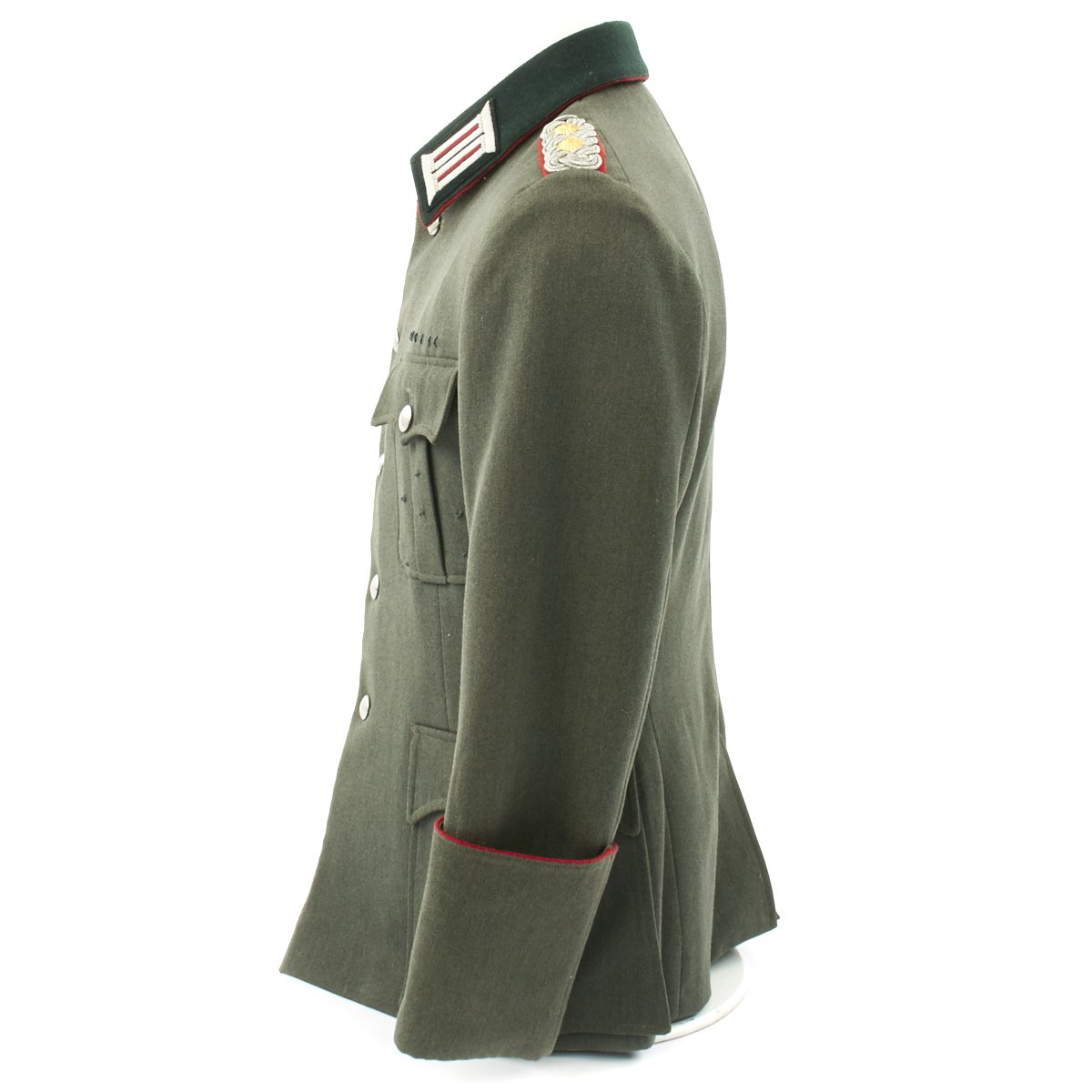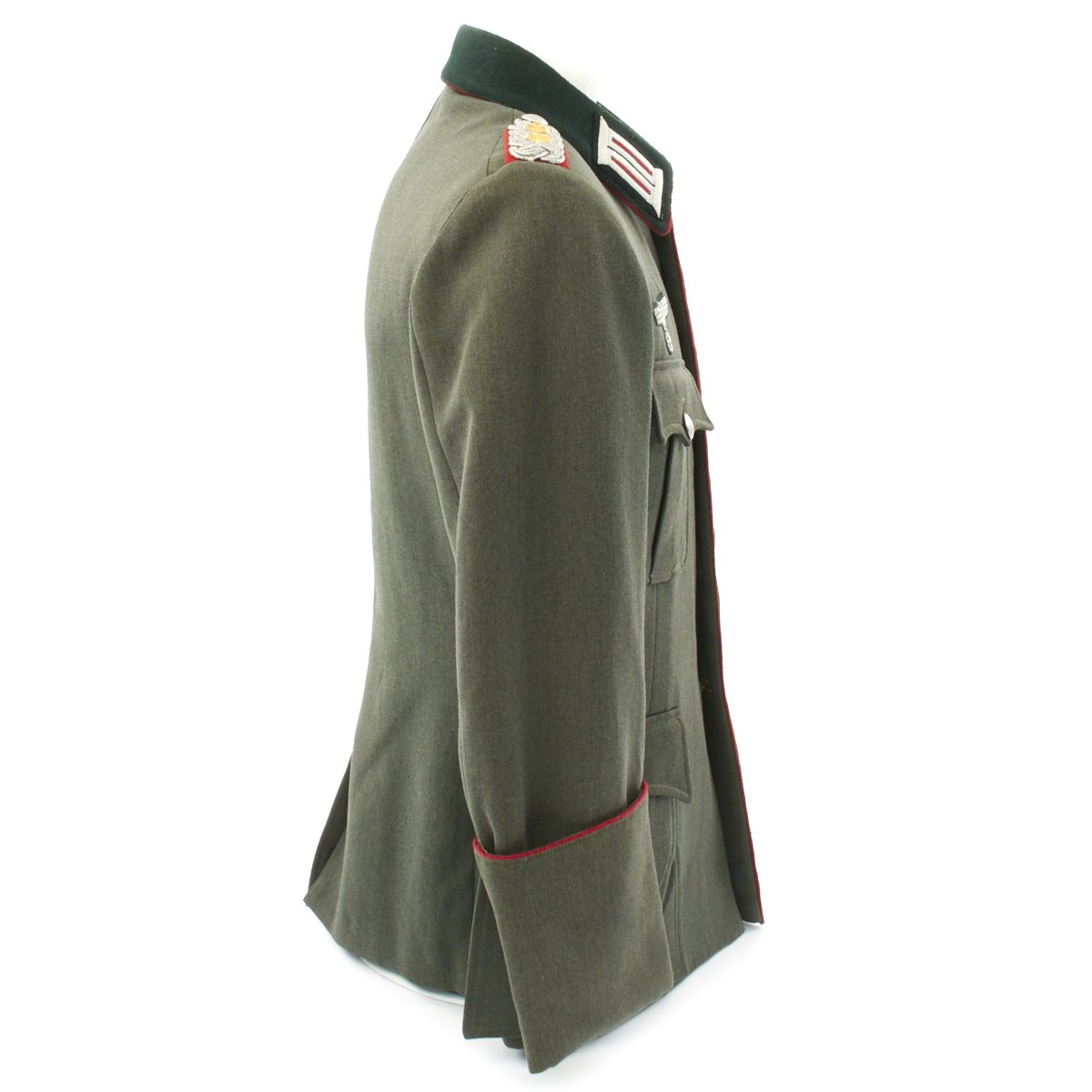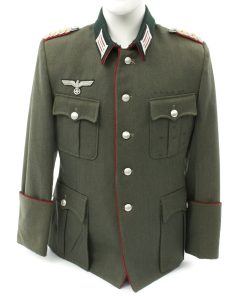Original German WWII Army Artillery Tailored Officer Colonel Tunic – Oberst Original Items
$ 995,00 $ 248,75
Original Item: Only One Available. This is an absolutely gorgeous, choice example of a tailor made WW2 German Artillery officer tunic. Officers had to supply their own uniforms, and they were usually obtained from private tailors, as is the case here. This beautiful tunic is untouched, and in excellent overall condition.
Approximate measurements are:
Chest: 42 inches
Shoulders: 17 1/2 inches
Waist: 38 Inches
Arms: 24 inches
The tunic itself is made of a heavy weight field gray wool, that would have been appropriate for both field and service use. The front closes with six silver buttons, typical for wartime manufacture. The attractive Army breast eagle is hand embroidered in aluminum bullion, and is very neatly hand stitched to the chest in a fashion typical of wartime German tailor work. The collar tabs are red piped for Artillery, and are machine applied; there is no sign of previous tabs ever having been applied.
The Artillery officer shoulder boards each have a two gold colored rank pips, indicating the rank of Oberst (Colonel), and are neatly and tightly applied. There are tailor applied loops for multiple badges and for a ribbon bar. The exterior of this Artillery officer tunic is extremely clean, retaining virtually all of the original wool nap, and showing no staining.
The inside of this Artillery officer tunic is fully lined with artificial silk, as is typical, and exhibits lots of neatly done hand sewing. There is a machine embroidered tailor tag in the lining indicating manufacture by the firm of ARTHUR HUCK in BERLIN at 52 BOXHAGENSTRASSE.
There is also a dagger hanger, with a clip marked with RZM M5/71 OLC for Overhoff & Cie. of Lüdenscheid. There is no indication, inside or out, that this Artillery officer tunic was ever actually worn. This tunic makes for a fantastic display.
The Heer, the army of the German military during the Third Reich, was established in 1935. Over the next 10 years, German Army troops wore a huge variety of uniforms. Enlisted men generally wore uniforms issued from military depots. Most enlisted soldiers wore wool trousers and a tunic with four external pockets, known as a Feldbluse (field blouse). Before the war, soldiers also were issued a walking-out tunic, with flashy insignia, called the Waffenrock. Officers wore the same general uniform styles, but as officers had to supply their own uniforms, they usually wore tailor made versions. There were also myriad varieties of specialized uniforms worn by certain units or in specific situations, from the stylish black wool “wraps” worn by crews of armored fighting vehicles, to the drab HBT work uniforms. There were tropical and summer uniforms, and camouflage smocks for combat troops. For troops operating in winter climates, there were long wool overcoats, fur clothing articles, and padded jacket and trousers sets. In 1944, a new uniform was introduced, featuring a short jacket with only two external pockets. Most but not all German Army uniform jackets bore the Heer emblem of an eagle holding a swas.
Fast Shipping with Professional Packaging
Thanks to our longstanding association with UPS FedEx DHL, and other major international carriers, we are able to provide a range of shipping options. Our warehouse staff is expertly trained and will wrap your products according to our exact and precise specifications. Prior to shipping, your goods will be thoroughly examined and securely secured. We ship to thousands clients each day across multiple countries. This shows how we're dedicated to be the largest retailer on the internet. Warehouses and distribution centres can be located throughout Europe as well as the USA.
Note: Orders with more than one item will be assigned a processing date depending on the item.
Before shipping before shipping, we'll conduct a thorough inspection of the items you have ordered. Today, the majority of orders will be delivered within 48 hours. The delivery time will be between 3-7 days.
Returns
The stock is dynamic and we cannot completely manage it because multiple stakeholders are involved, including our factory and warehouse. So the actual stock may alter at any time. It's possible that you may not receive your order once the order has been made.
Our policy is valid for a period of 30 days. If you don't receive the product within 30 days, we are not able to issue a refund or an exchange.
You can only return an item if it is unused and in the same state as the day you received it. You must have the item in its original packaging.
Related products
Uncategorized
Armored Burgonet Helmet & Polearm from Scottish Castle Leith Hall Circa 1700 Original Items
Uncategorized
Uncategorized
Uncategorized
Band of Brothers ORIGINAL GERMAN WWII Le. F.H. 18 10.5cm ARTILLERY PIECE Original Items
Uncategorized
Uncategorized
Uncategorized
Uncategorized
Uncategorized
Uncategorized
Uncategorized
Angolan Rebel 1970s era 60mm Inert Display Mortar from Angolan Civil War Original Items
Uncategorized
Uncategorized
Armoured Fighting Vehicles of the World: AFVs of World War One (Hardcover Book) New Made Items
Uncategorized
Uncategorized
Uncategorized
Uncategorized
Uncategorized
Uncategorized
Uncategorized
